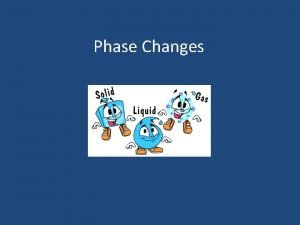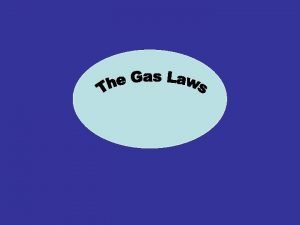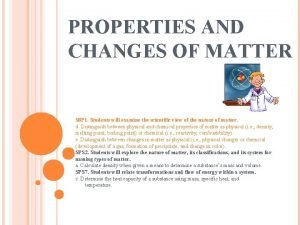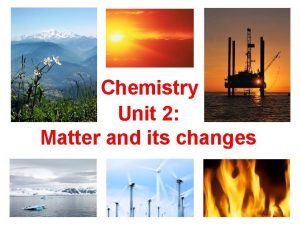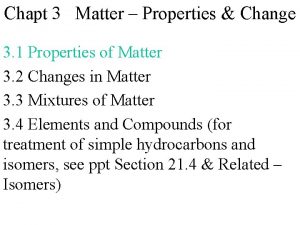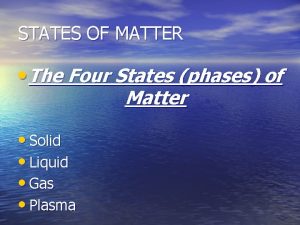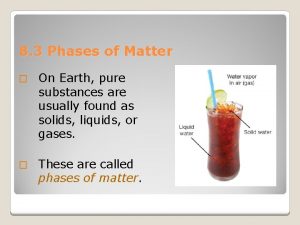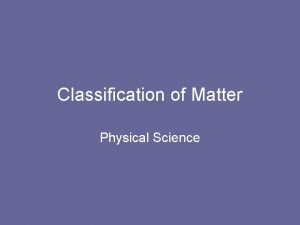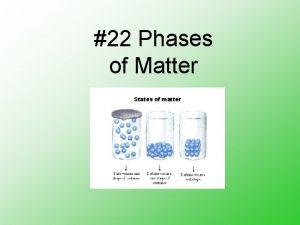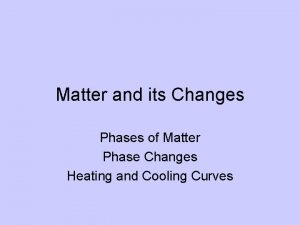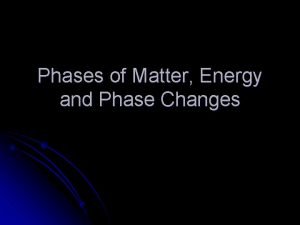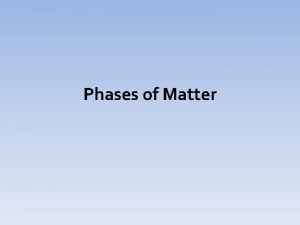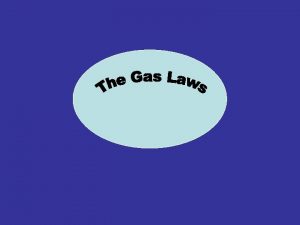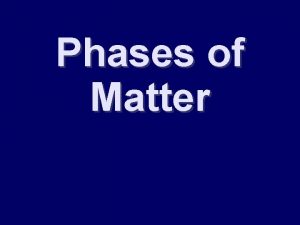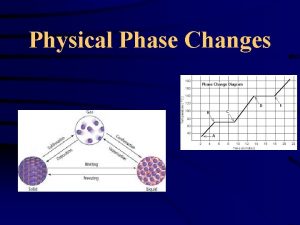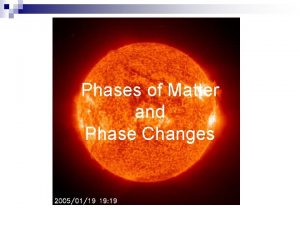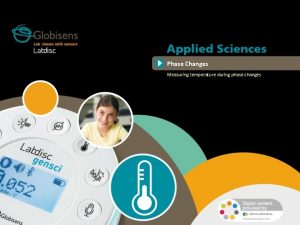Phases of Matter and Phase Changes Phase l




















- Slides: 20

Phases of Matter and Phase Changes

Phase l . Depends on strength of forces of attraction between particles.

Solids l l Definite shape and volume. Most dense phase l l Difficult to compress. Exception is water!. l Particles vibrate in fixed positions Crystalline lattice structure. Most attraction between particles. l Note: l l l Amorphous solids include glass, plastic, wax, and silly putty

Liquids Definite volume l No definite shape l Hard to compress l Particles slide past each other l Forces of attraction between particles still high l

Gases l l l No definite shape or volume Expands to fill container Lowest density l Density depends on pressure l Little attraction between particles l “Vapor” = a gaseous state of something that is normally liquid l (Ex: water vapor)

Phases Applet l Short Summary video on phases: (1 min) l http: //www. youtube. com/watch? v=s- Kvo. Vzuk. Ho&safe=active l Applet: (Excellent) l https: //phet. colorado. edu/en/simulation/states- of-matter l http: //www. harcourtschool. com/activity/states_ of_matter/

Changes in Phase Gas Condensation Vaporization (Boiling or Evaporating) Liquid Solidification Melting (fusion) Solid

Let’s Skip a Phase l Sublimation l Directly from the solid phase to the gas phase. l Happens with substances with weak intermolecular forces of attraction l They separate easily! l Ex: CO 2(s) dry ice, Iodine CO 2(s) → CO 2 (g) http: //www. youtube. com/watch? v=8 t. HOVVg. Gkpk

Energy l Energy = capacity to do work or produce heat. It can be anything that causes matter to move or change direction. l Ex: electrical, atomic, mechanical, chemical

Law of Conservation of Energy l Energy can’t be created or destroyed, just transferred from one form to another

PE vs. KE l Potential Energy stored energy l l Energy can be stored in bonds between atoms Kinetic Energy energy of motion l All atoms are moving and vibrating unless at absolute zero

Energy and Changes to Matter l Exothermic Change: l l A + B → C + D + energy Energy is released or “ex”its Endothermic Change: A + B + energy → C + D l Energy is absorbed or “en”ters

Energy During Phase Changes l Solid Liquid, Liquid Gas l Endothermic l Energy is absorbed and overcomes attractive forces between particles

l Gas Liquid, Liquid Solid l Exothermic l As particles come closer together energy is released

http: //www. kentchemistry. com/links/Matter/ Heating. Curve. htm

Heat Energy l Also called Thermal energy, it makes particles move more as it is added l Measured in Joules or calories. http: //www. youtube. com/watch? v=f 1 e. AOyg. DP 5 s&safe=active

Heat Flow l Heat energy travels from an object of higher temp. to one of lower temp. until both reach the same temp.

Temperature l Measure of the average kinetic energy (motion) of all the particles in a sample. l Not a form of energy!!! l But if you add heat energy or take it away, it causes particles to move faster or slower and thus changes the temp.

Heat vs. Temperature l Teacup vs. Bathtub l Both at 25˚C l Which one contains more heat energy? l Which one has the greater average KE?

Label This Graph
 Phases changes of matter
Phases changes of matter Phase changes of matter
Phase changes of matter Deposition phase change
Deposition phase change Changes in latitudes, changes in attitudes meaning
Changes in latitudes, changes in attitudes meaning Example of a chemical change
Example of a chemical change Properties and changes of matter worksheet
Properties and changes of matter worksheet Chemistry matter and its changes
Chemistry matter and its changes Matter-properties and changes answer key
Matter-properties and changes answer key Big idea 9 changes in matter
Big idea 9 changes in matter True or false: chemical and physical changes alter matter.
True or false: chemical and physical changes alter matter. Four phases of matter
Four phases of matter 4 phases of matter
4 phases of matter 3 phases of matter
3 phases of matter Why isn't it a good idea to classify matter by its phases
Why isn't it a good idea to classify matter by its phases Phases of matter foldable
Phases of matter foldable Phases of matter
Phases of matter States of matter concept map
States of matter concept map What is a chemical property
What is a chemical property Changes of state of matter
Changes of state of matter Types of change in matter
Types of change in matter White matter nervous system
White matter nervous system
